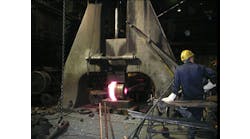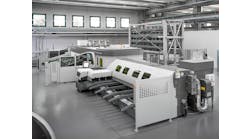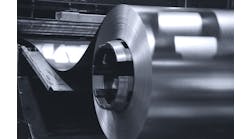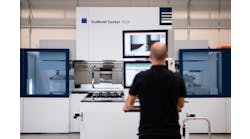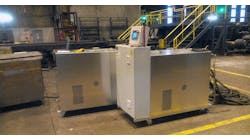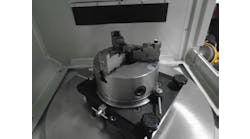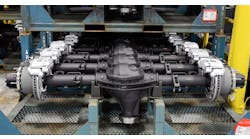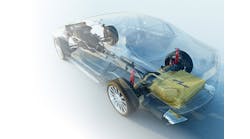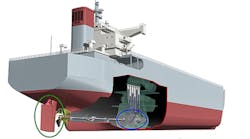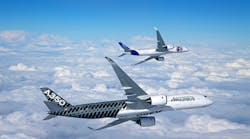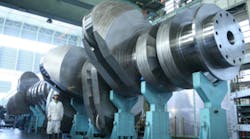Kobe Steel, Ltd. gained a special approval from the Nippon Kaiji Kyokai — ClassNK, or NK, the maritime classification agency that monitors safety for life and property at sea — concerning the factor it developed for calculating design fatigue strength of built-up crankshafts for maritime diesel engines. Under the crankshaft design rules of the International Association of Classification Societies (IACS), ClassNK granted a 1.05 as the factor K for calculating the fatigue strength. This is the first time for such an approval by a ship classification society.
Kobe Steel has initiated trials of its die-forging method for maritime diesel engine crankshafts, a method that enhances fatigue strength on crankshaft material by 20% over conventional forging methods. The improvements are attributable to Kobe’s expertise as an integrated steelmaker and steel forger, it noted.
Last year Kobe announced the new forging method for large-dimension crankshafts used in diesel marine engines: the process involves die forging to produce near-net-shape “throws” rather than the more standard roll forging process. (Ductile iron casting or specialty steel machining are other production routes.)
Now, the steelmaker explained that ClassNK’s approval of higher design fatigue strength will guarantee greater reliability in the crankshaft, as well as weight-savings that will help to improve fuel consumption.
The entire development has been guided by shipbuilders’ need to reduce fuel consumption to meet tighter emissions regulations, and to lower operating costs. These are cited as factors in the emergence of “eco-ship” designs, which aim to reduce drag on ships’ hulls, to improve fuel consumption, and to lower diesel exhaust emissions.
Part of the eco-ship design movement involves using larger propellers that rotate more slowly, which means the drive system must achieve higher output to offset the lower rotating speed. Thus, designers of maritime diesel engines are opting for long-stroke engines, in which the crank throws are longer and heavier than standard – but this leads to higher load stress on the crankshaft and higher bearing loads.
In a separate development, Kobe Steel stated it has increased the design strength of steel casting and forging materials for rudder parts by 60%, compared with conventional materials. These materials enable rudder stock and other cast parts to be made smaller and lighter, thereby increasing vessel speed and improving fuel consumption.
These high-strength materials have already received approval from ship classification societies in various countries.

